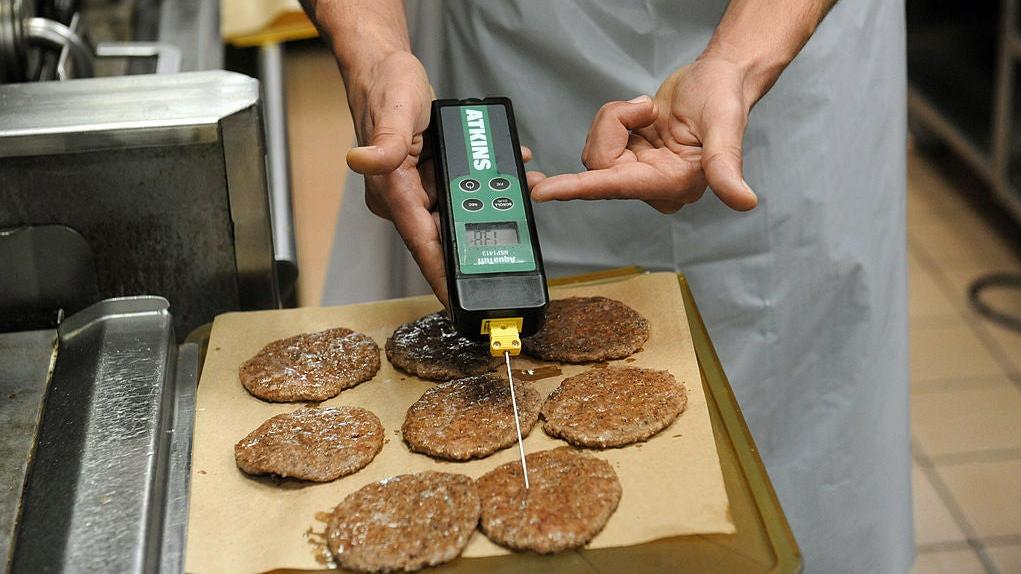The One Job Robots Should Steal From Restaurant Workers
As a food service employee, I welcome our robot overlords.
I'm not a fan of the whole "robots in the kitchen" concept. If that makes me a Luddite, well, at least I'm not alone. But a recent article from industry publication QSR Magazine had the evocative headline "5 Reasons Restaurants Should Automate Temperature Monitoring." Far from my usual grumbling about automation, my reaction was a firm and immediate "Yes, please."
For those not familiar with the dreaded "temp checks," a bit of background: In a food service context, temp checking involves using a thermometer to periodically gauge the temperature of ingredients, inventory, or foodstuffs prepared and waiting for sale. Sometimes the probes are used in conjunction with a checklist and timer. Almost invariably, this process is a tedious chore that's as vital as it is frustrating. Yet for the safety of everyone involved, it simply must be done.
Tom Woodbury, author of the QSR article, is not a neutral party here; he's a consultant for an IoT ("internet of things") company, advising companies on how to bring automation to their processes. Nevertheless, the way this article describes the necessity and aggravation of temp checks is entirely relatable.
"The pressure is on to do more with less, while keeping employees happy," Woodbury notes, and he goes on to say that automating the process of temp checks "can benefit employees, customers, and management"—a painfully accurate assertion. From a food service worker's perspective, this idea hurts so good.
How restaurant automation helps workers
Let me be clear: No matter how frustrated a person might be with their job, no worker with even a shred of empathy wants to be responsible for a case of food poisoning or be forced to toss a pallet of spoiled product into the dumpster. But when you're short-staffed and working on three tasks at once, it can be difficult to drop everything and step away to temp-check the fried cod at the steam table.
The task becomes even worse when, as is often the case, employees are either poorly trained on the process or given tools that work perhaps half of the time. And customers, as you might guess, are less than understanding when you have to step away from the counter.
Given all these challenges, Woodbury writes, an automated monitoring system could eliminate a "mundane and tedious task from an employee's 'to-do' list, which could help make their jobs more enjoyable, and less stressful during busier and peak shift times."
Of course, employees should be trained to perform manual temp checks in the event that the system goes down. But under most circumstances, this is a perfect job for the robots.
Electronic systems could help reduce food waste
Adding robots to restaurants certainly makes sense from a corporate standpoint: Companies don't have to pay wages to a machine, and the BurgerFlipper 9000 will always show up for its shift because it lives right next to the grill. But those savings are unlikely to be passed on to the customers in the form of slashed menu prices, nor will they be used to increase the wages of the few human employees left to oversee the RoboCook. As such, I'm not exactly enthused about the inevitable "robots replacing workers" thing.
Even if the money isn't going where it arguably should, however, a system of electronic temp-checkers could at least help to reduce food waste. I've seen and smelled the amount of rotting calories that go into food service dumpsters. It's enough to be disgusting on multiple levels, and spoilage, overcooking, or contamination caused by improper temperature management are among the most frequent culprits.
To some degree, this also applies to inventory. Some kind of machine-managed FIFO (first in, first out) system could keep new products from being stacked atop old stock. But that's a different topic altogether, with more logistics than I'm prepared to tackle here.
How robots and human employees can work together
I have, at times, been both employee dumping the product in the trash and the supervisor holding the bag. It never feels good to watch food that you've paid for and prepared get thrown away. But unless it's explicitly the fault of the employee (in which case, some retraining should take place), then dumping it is the right call, and automation could help a worker make those calls more accurately. If the robot tells you something is wrong, maybe don't serve those shrimps to your customers.
Automated temperature checks could really streamline food service operations, provided that they're paired with complementary human workers. By taking this drop-everything task off the shoulders of a (likely short) staff, a computer-driven solution could go a long way toward smoothing the chaos of the average shift. No more half-functioning thermometers (that you said you'd replace, Daryl) and checklists sticking to a greasy clipboard. In this specific case, bring on the bots.
